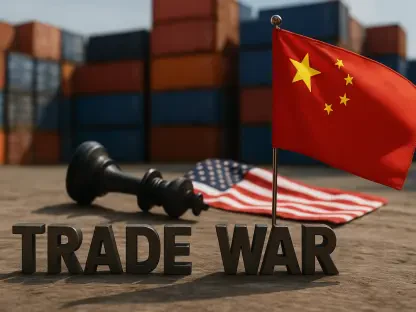There’s a harsh reality many dealmakers prefer to ignore: your M&A strategy is only as sound as the capital behind it. And right now, that capital is getting a lot more expensive. The era of ultra-cheap money that fueled a frenzy of mergers and acquisitions is over. Too many companies still act like it’s business as usual—quietly assuming yesterday’s low rates in today’s high-rate world.
The Mergers and Acquisitions market is indeed still alive. But while executives chase synergies and growth, many neglect a foundational shift: the cost of capital has spiked, and it’s fundamentally rewriting the dealmaking playbook. Studies show that 70–90% of M&A deals fail to meet their intended objectives—and flawed financial assumptions are often a culprit. In an environment where money isn’t cheap, dirty financing leads to dumb deals.
This article examines what the high-cost-capital era really means for M&A, how it’s undermining deal performance and valuation, and what leading acquirers are doing to structure, finance, and execute transactions that can still thrive in today’s conditions.
Rising Capital Costs Are A Dealmaking Liability
To start with the obvious: expensive capital kills deals. However, in enterprise M&A, it doesn’t stop there. Skyrocketing interest rates and higher borrowing costs don’t just nibble at your profit margins; they can derail compliance, invite investor wrath, and introduce cascading failures across your business. An overpriced acquisition today can become tomorrow’s writedown, tarnishing your reputation and balance sheet in one blow.
Take private equity’s recent reality check. These prolific dealmakers thrived on leverage, but since 2022, the spike in debt costs has drastically slowed their activity—M&A among financial buyers was down 64% from peak levels as of late 2024. Why? Because higher interest rates carry a one-two punch: higher cost of capital (making deals less attractive) and lower valuations (since pricier capital means future earnings are worth less). Feed a leveraged buyout model 7% debt instead of 3%, and that “great deal” can flip into a value-destroying fiasco.
In corporate M&A, the same risk looms. Rely on outdated, rosy financing assumptions, and you risk systemic failure: acquisitions that looked good on paper start bleeding cash when interest payments balloon, leading to layoffs, divestitures, or worse. In a high-rate environment, boards and regulators are far less forgiving. A merger that sinks under debt can trigger shareholder lawsuits or even regulatory scrutiny of whether directors exercised proper fiduciary care.
Beyond a CFO headache, rising capital costs are an enterprise liability that can undermine your entire growth strategy if mismanaged.
Due Diligence Discipline: You Can’t Trust What You Don’t Stress-Test
Here’s the hard truth: many acquirers have no idea how sensitive their deals are to shifts in financing costs. Due diligence often focuses on strategic fit and basic financials, but fails to fully expose how a deal performs when capital gets pricier. In an era of volatility, that’s like flying blind.
Financial observability in M&A means continuously monitoring and testing deal assumptions under different scenarios. That includes:
Interest rate stress-testing: Rerunning valuation models with higher interest rates or stricter credit terms to see if the deal still makes sense.
Cash flow and covenant tracking: Ensuring the target’s cash flows can cover debt service comfortably, and flagging any covenant headroom issues if rates rise.
Valuation and multiple re-checks: If the target’s valuation was based on a low discount rate, updating it to current reality (higher discount rates shrink net present value).
Yet most M&A teams still rely on static spreadsheets and one-off sensitivity checks before signing. That’s blind hope. If you’re not instrumenting your deal models for real-time changes, you won’t see the crash coming. Just as engineers monitor data pipelines for drift, dealmakers must monitor market signals: is the Fed signaling more rate hikes? Are bond yields creeping up? Has the financing environment shifted during negotiations? Without this diligence and discipline, you’re trusting a deal you haven’t truly verified. And in today’s climate, that’s a recipe for failure.
Integration Can’t Save A Deal Mispriced At The Start
Modern enterprises pour resources into post-merger integration and M&A operations to make deals succeed. But what happens after the close is just as important as before it. If your deal was fundamentally mispriced or over-leveraged on day one, no amount of integration excellence can save it.
Think of it this way: companies often celebrate a merger at closing, then scramble to integrate IT systems, cultures, and teams (the “synergies” work). But if you overpaid based on unrealistic, cheap capital assumptions, you’ve saddled the combined company with a burden that PMI can’t overcome. All those integration wins and cost cuts might only end up servicing interest payments. This is why monitoring the deal’s health after close is essential. Leading acquirers are embedding “deal monitoring” akin to model monitoring in AI systems: real-time dashboards that track key metrics like synergy realization, debt-to-EBITDA ratio, and ROI versus the deal model. If an indicator veers off course (say, integration costs spike or revenue synergies fall short), the company can course-correct early—if the deal was sound to begin with.
But to be clear: these tools and dashboards are only as good as the inputs you feed them. If your initial model assumed fantasy-land financing or ignored the possibility of rate changes, then your post-merger tracking will simply document a failing deal. As with AI, where anomalies often trace back to upstream data issues, in M&A, any post-close struggles often trace back to deal design issues. In short, you can’t integrate your way out of a bad deal. M&A ops can’t fix what your planning missed. The only real fix is to not do bad deals in the first place. And that gives rise to the next point: building deals that hold up under scrutiny from day zero.
Sound Financing From Day Zero, Or No Deal
As M&A marches on, regulatory and governance scrutiny is rising in parallel. In a world of higher interest rates and economic uncertainty, regulators, boards, and investors are keenly aware of the risks of overly leveraged, overoptimistic deals. Just as data privacy laws demand traceability and accountability in AI, financial laws and good governance demand rigor and transparency in deal-making. None of that is possible without clean, well-founded numbers.
If your acquisition’s success hinges on rapid growth and cheap debt, that’s a big red flag. If your merger model conveniently glosses over the cost of capital or uses aggressive forecasts to “make the numbers work,” you’re not just violating best practices—you might be violating fiduciary duty. And ignorance won’t save you. In 2025, capital allocation decisions are facing new trade-offs and intense scrutiny. Directors must demonstrate they weighed the risks of a deal, including financing risks, or face investors’ ire.
That’s why forward-looking companies enforce deal governance frameworks that start before the deal is signed, including:
Strict hurdle rates: If a deal can’t beat your weighted average cost of capital (with a cushion), it doesn’t move forward. No exceptions for “strategic fit” without numbers to back it.
Independent fairness opinions and risk audits: In addition to the usual fairness opinion, some firms now include a “capital resiliency” review—an objective check that the deal’s financing and projections are viable under realistic scenarios.
Enhanced disclosure: Companies are more transparent with investors about deal assumptions. Better to explain the financing strategy up front than to surprise the market later with a blown forecast.
Compliance doesn’t begin at the shareholder lawsuit or the write-off of goodwill; it starts with disciplined deal structure and truthful assumptions. In high-cost capital times, trust: it’s far better to kill a risky deal early than to explain later why it imploded.
M&A Success Is Pipeline-Deep
The myth that success starts at closing must die. In every disastrous acquisition, the failure usually started long before the ink was dry on the merger agreement. Trust and success in M&A are pipeline-deep. It starts with your strategy sessions, your target sourcing, your preliminary modeling. It lives in your valuation methods, your due diligence protocols, your integration planning.
That’s why the smartest enterprises are redesigning their deal pipelines with end-to-end integrity in mind. This includes:
“Data contracts” for deal assumptions: Just as software teams use data contracts, leading M&A teams create formal documentation for every key assumption (growth, cost synergies, financing rates) agreed upon by all stakeholders.
Schema enforcement for deals: Standardized templates and checklists that every deal must comply with. If something’s out of spec (e.g., a projection that assumes margin expansion far above industry norm), it flags for higher approval or adjustment.
Real-time alerts and kill switches: If market conditions change drastically (say, the Fed suddenly hikes rates by 100 bps or credit spreads jump) during a deal’s negotiation, smart companies pause and reassess rather than plough ahead.
You can’t build a great acquisition on a shaky foundation. You might have the best integration team in the world, or the most compelling strategic logic, but if the pipeline of data and assumptions feeding the deal is faulty, you’ve built in vain.
Fix the pipeline, and you fix the odds of success.
What Leading Acquirers Are Doing Right Now…
The best dealmakers aren’t waiting for interest rates to drop back to zero or for a failed deal to teach them a lesson. They’re taking action now to adapt to the high cost of capital environment by:
Doubling down on discipline: Imposing stricter hurdle rates and requiring both cost and revenue synergies on every deal to ensure value creation is rock-solid. Instead of betting on long-term growth alone, deals must show bankable benefits within the first year.
Getting creative with structure: Using contingent payments, earn-outs, and seller financing to bridge valuation gaps when capital is pricy. If a seller wants a high price, they might have to earn it by hitting post-deal performance targets. Acquirers are also negotiating more contingent deal structures and pursuing creative financing solutions to spread risk.
Strengthening integration and accountability: Tying leadership compensation to post-merger results and constantly monitoring those results. For instance, some companies now assign a “value realization officer” to every major deal, tasked specifically with hitting the synergy targets and reporting back to the board.
Preserving optionality: When uncertainty is high, flexibility is gold. Leading firms keep some excess cash and don’t bet the farm on any single deal. They’re also willing to walk away more often. This culture of saying “no” to borderline deals is a huge shift from the cheap-money days when FOMO ruled the day. Capital discipline means fewer but smarter bets.
Companies like these treat M&A like portfolio management in a volatile market: diversify your approaches, hedge your risks, and insist on quality fundamentals. It’s no coincidence that many of the same companies leading in M&A today are those known for strong operational and financial management in general.
The Bottom Line
You can’t fix a merger post-close if you broke it back at the term sheet. In today’s dynamic, high-interest environment—where deals can sour fast if the numbers don’t pan out—there’s no cushion or bailout coming for sloppy dealmaking.
In short, garbage in and garbage out still holds: if you feed your M&A pipeline bad assumptions, you’ll get bad outcomes. Only now, the garbage comes with a higher price tag and a louder fallout.
The rising cost of capital has made one thing abundantly clear: Before asking “Is this acquisition the right strategic fit?” ask “Is it being financed the right way?” because the real cost of misjudging capital is the strategic damage of a failed deal, the reputational hit of a bad gamble, and the opportunity cost of what your company could have done instead.
It’s a challenge to every executive, deal sponsor, and board member: Get your house in order. The smart money is already adapting. It’s time to do the same.









